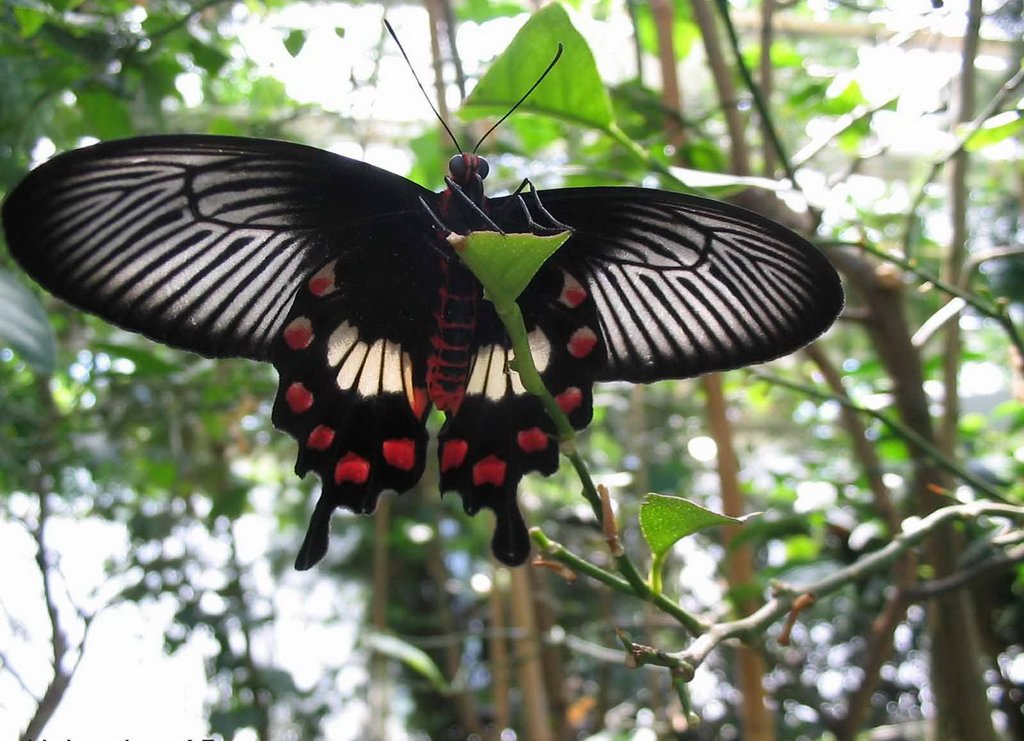
Papilio anchisiades(Papilio anchisiades)
Phylum —arthropoda
Class —insecta
Order —lepidoptera
Family —papilionidae
Genus –papilio
Appearance
Papilioanchisiades are large and mostly black with a wingspan of 7-10 cm. Unlike most swallowtails, Papilioanchisiades lack tails on their hindwings. Their most distinctive characteristics are pink, ruby, or purplish spots on the hindwings. Females can be detected by a diffuse white patch on the upper forewing. In the early stages, the caterpillars are green and brown with white markings and bulges on their backs. The pupae are light-brown in color with light green spots, and are thicker in their anterior portion.
Habitat
Papilioanchisiades can be found from south Texas, USA to Argentina, but have also been reported in Kansas, southeast Arizona, and west Texas in the United States.
Behavior
During reproduction and in the caterpillar stages of life, Papilioanchisiades is social. The females lay eggs on plant leaves in groups, and caterpillars lay on leaves in clusters during the day and feed at night. They also molt together. The caterpillars are equipped with special scent organs that spray an odor to ward off predators when alarmed. Papilioanchisiades take several flights during May and October, and their flight patterns are diurnal.
Diet
As caterpillars, these butterflies feed on citrus trees such as Citrus, Casimiroa, Zanthoxylum, and as adults, they use their proboscis to feed on flower nectar.
Reproduction
Female Papilioanchisiades lay their eggs in groups on host plant leaves. The most common host plants are Citrus limon and Casimiroaedulis in Mexico. The female butterflies usually mate several times in their life time, and release many eggs each time.
In captivity
The mesh cage with a size of 50 × 50 × 70 mm is suitable for keeping butterflies. Room temperature is necessary. Daylight time is 12 hours. You can feed butterflies with honey syrup diluted with boiled water in a ratio of 1:10.
For their reproduction you need a terrarium with a size of 50x50x70 cm. Females lay eggs in groups of 40 items on the leaves of the forage plant. Incubation lasts 6-7 days. Forage plants should be replaced every 3-4 days. It is better to keep the caterpillars in mesh terrariums of 10-20 pieces. In the terrarium, you need to place a branch of a forage plant. The temperature is 22-25oC. The humidity is 60-70%. The caterpillar develops for a month and a half. The butterfly leaves the pupa after 2-3 weeks.
 Russian
Russian
 English
English























